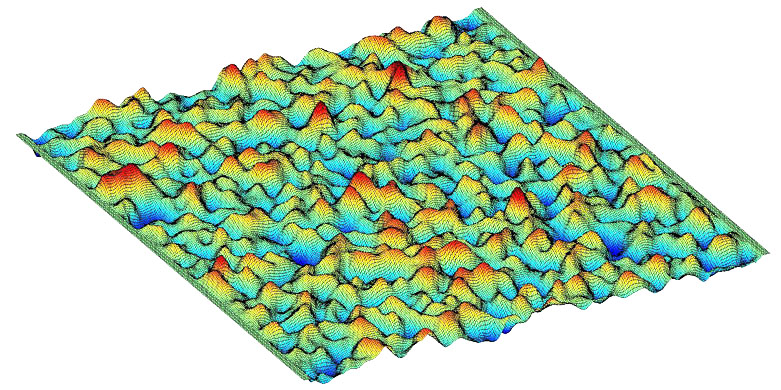Cartilage Topography
Description
There are two important components that we hypothesize govern lubrication: cartilage topography and synovial fluid. Natural cartilage has a non-regular, rough surface at the microscale. Synovial fluid within the joint behaves as a non-Newtonian viscous fluid. To date, little has been done to understand how this specific surface topography interacts with the surrounding synovial fluid.
Therefore, the first goal of this research is to explore the lubrication mechanisms of articular joints related to the cartilage surface topography and synovial fluid properties. Computational simulation of the fluid and solid behaviours, and their interaction, will be used as to investigate the retention of a lubricating fluid film between cartilage surfaces. More effort will be placed on the microscale than the macroscale, as little is known about synovial fluid flow at this scale.
In the second part of this work, we will investigate the influence of the induced fluid shear stresses on cartilage tissue metabolism. Tissue engineered cartilage samples will be exposed to controlled levels of fluid shear, by altering surface topography and fluid viscosity in a multi-axial loading bioreactor.
Besides understanding the mechanism behind natural joint lubrication, the outcome of this project could also provide important guidelines for designing new implants with innovative surface structures.
Contact
No database information available

